Sumit J. Darak
Low Complexity Deep Learning Augmented Wireless Channel Estimation for Pilot-Based OFDM on Zynq System on Chip
Mar 02, 2024Abstract:Channel estimation (CE) is one of the critical signal-processing tasks of the wireless physical layer (PHY). Recent deep learning (DL) based CE have outperformed statistical approaches such as least-square-based CE (LS) and linear minimum mean square error-based CE (LMMSE). However, existing CE approaches have not yet been realized on system-on-chip (SoC). The first contribution of this paper is to efficiently implement the existing state-of-the-art CE algorithms on Zynq SoC (ZSoC), comprising of ARM processor and field programmable gate array (FPGA), via hardware-software co-design and fixed point analysis. We validate the superiority of DL-based CE and LMMSE over LS for various signal-to-noise ratios (SNR) and wireless channels in terms of mean square error (MSE) and bit error rate (BER). We also highlight the high complexity, execution time, and power consumption of DL-based CE and LMMSE approaches. To address this, we propose a novel compute-efficient LS-augmented interpolated deep neural network (LSiDNN) based CE algorithm and realize it on ZSoC. The proposed LSiDNN offers 88-90% lower execution time and 38-85% lower resource utilization than state-of-the-art DL-based CE for identical MSE and BER. LSiDNN offers significantly lower MSE and BER than LMMSE, and the gain improves with increased mobility between transceivers. It offers 75% lower execution time and 90-94% lower resource utilization than LMMSE.
Design and Performance Analysis of Hardware Realization of 3GPP Physical Layer for 5G Cell Search
Nov 22, 2022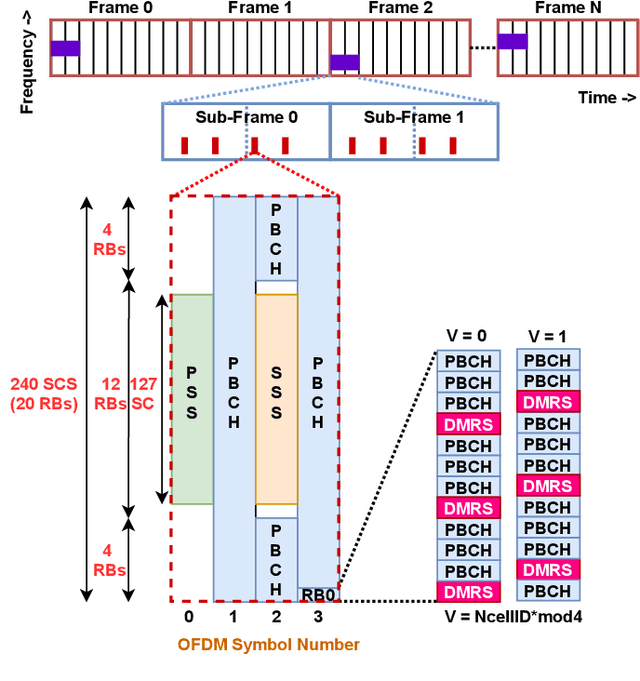
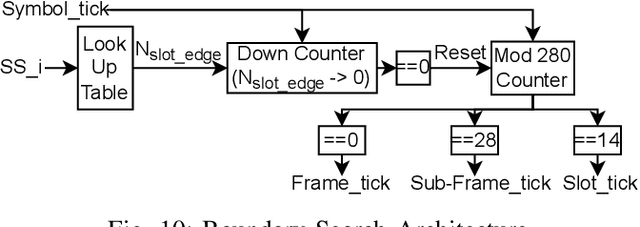
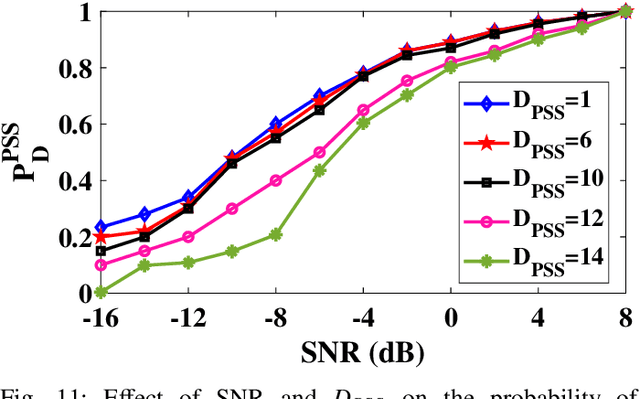
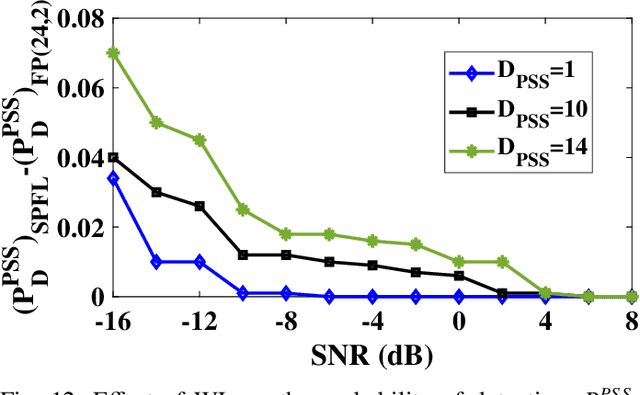
Abstract:5G Cell Search (CS) is the first step for user equipment (UE) to initiate the communication with the 5G node B (gNB) every time it is powered ON. In cellular networks, CS is accomplished via synchronization signals (SS) broadcasted by gNB. 5G 3rd generation partnership project (3GPP) specifications offer a detailed discussion on the SS generation at gNB but a limited understanding of their blind search, and detection is available. Unlike 4G, 5G SS may not be transmitted at the center of carrier frequency and their frequency location is unknown to UE. In this work, we demonstrate the 5G CS by designing 3GPP compatible hardware realization of the physical layer (PHY) of the gNB transmitter and UE receiver. The proposed SS detection explores a novel down-sampling approach resulting in a significant reduction in complexity and latency. Via detailed performance analysis, we analyze the functional correctness, computational complexity, and latency of the proposed approach for different word lengths, signal-to-noise ratio (SNR), and down-sampling factors. We demonstrate the complete CS functionality on GNU Radio-based RFNoC framework and USRP-FPGA platform. The 3GPP compatibility and demonstration on hardware strengthen the commercial significance of the proposed work.
Hardware Software Co-design of Statistical and Deep Learning Frameworks for Wideband Sensing on Zynq System on Chip
Sep 06, 2022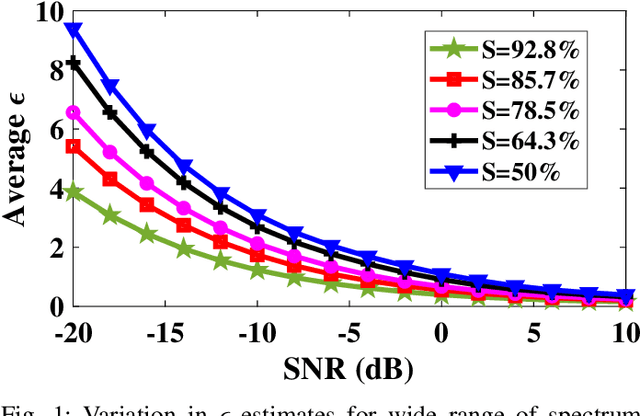
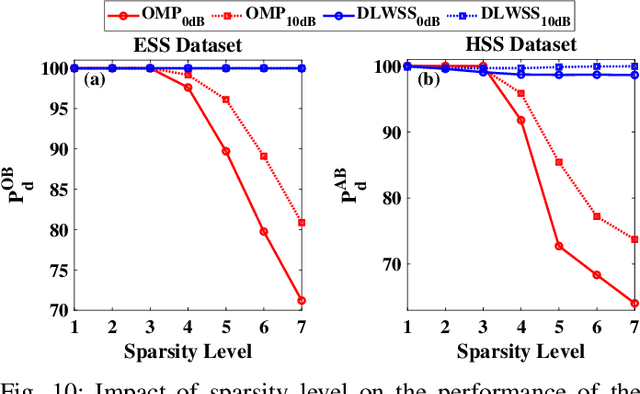
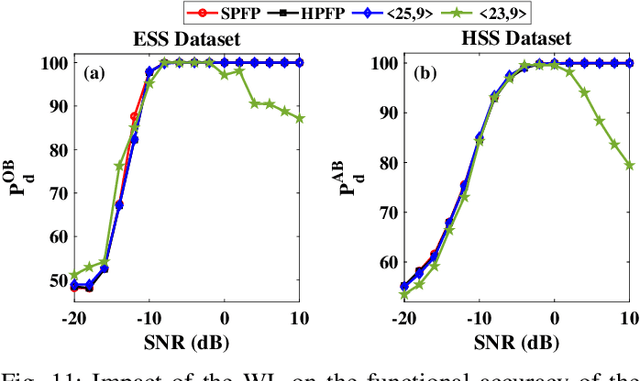
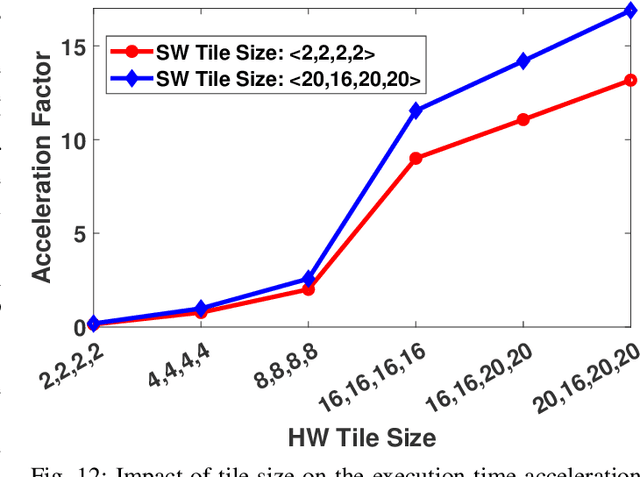
Abstract:With the introduction of spectrum sharing and heterogeneous services in next-generation networks, the base stations need to sense the wideband spectrum and identify the spectrum resources to meet the quality-of-service, bandwidth, and latency constraints. Sub-Nyquist sampling (SNS) enables digitization for sparse wideband spectrum without needing Nyquist speed analog-to-digital converters. However, SNS demands additional signal processing algorithms for spectrum reconstruction, such as the well-known orthogonal matching pursuit (OMP) algorithm. OMP is also widely used in other compressed sensing applications. The first contribution of this work is efficiently mapping the OMP algorithm on the Zynq system-on-chip (ZSoC) consisting of an ARM processor and FPGA. Experimental analysis shows a significant degradation in OMP performance for sparse spectrum. Also, OMP needs prior knowledge of spectrum sparsity. We address these challenges via deep-learning-based architectures and efficiently map them on the ZSoC platform as second contribution. Via hardware-software co-design, different versions of the proposed architecture obtained by partitioning between software (ARM processor) and hardware (FPGA) are considered. The resource, power, and execution time comparisons for given memory constraints and a wide range of word lengths are presented for these architectures.
Exploiting Side Information for Improved Online Learning Algorithms in Wireless Networks
Feb 16, 2022



Abstract:In wireless networks, the rate achieved depends on factors like level of interference, hardware impairments, and channel gain. Often, instantaneous values of some of these factors can be measured, and they provide useful information about the instantaneous rate achieved. For example, higher interference implies a lower rate. In this work, we treat any such measurable quality that has a non-zero correlation with the rate achieved as side-information and study how it can be exploited to quickly learn the channel that offers higher throughput (reward). When the mean value of the side-information is known, using control variate theory we develop algorithms that require fewer samples to learn the parameters and can improve the learning rate compared to cases where side-information is ignored. Specifically, we incorporate side-information in the classical Upper Confidence Bound (UCB) algorithm and quantify the gain achieved in the regret performance. We show that the gain is proportional to the amount of the correlation between the reward and associated side-information. We discuss in detail various side-information that can be exploited in cognitive radio and air-to-ground communication in $L-$band. We demonstrate that correlation between the reward and side-information is often strong in practice and exploiting it improves the throughput significantly.
Multi-armed Bandit Algorithms on System-on-Chip: Go Frequentist or Bayesian?
Jun 05, 2021



Abstract:Multi-armed Bandit (MAB) algorithms identify the best arm among multiple arms via exploration-exploitation trade-off without prior knowledge of arm statistics. Their usefulness in wireless radio, IoT, and robotics demand deployment on edge devices, and hence, a mapping on system-on-chip (SoC) is desired. Theoretically, the Bayesian approach-based Thompson Sampling (TS) algorithm offers better performance than the frequentist approach-based Upper Confidence Bound (UCB) algorithm. However, TS is not synthesizable due to Beta function. We address this problem by approximating it via a pseudo-random number generator-based approach and efficiently realize the TS algorithm on Zynq SoC. In practice, the type of arms distribution (e.g., Bernoulli, Gaussian, etc.) is unknown and hence, a single algorithm may not be optimal. We propose a reconfigurable and intelligent MAB (RI-MAB) framework. Here, intelligence enables the identification of appropriate MAB algorithms for a given environment, and reconfigurability allows on-the-fly switching between algorithms on the SoC. This eliminates the need for parallel implementation of algorithms resulting in huge savings in resources and power consumption. We analyze the functional correctness, area, power, and execution time of the proposed and existing architectures for various arm distributions, word-length, and hardware-software co-design approaches. We demonstrate the superiority of the RI-MAB over TS and UCB only architectures.
Distributed Learning in Ad-Hoc Networks: A Multi-player Multi-armed Bandit Framework
Mar 06, 2020



Abstract:Next-generation networks are expected to be ultra-dense with a very high peak rate but relatively lower expected traffic per user. For such scenario, existing central controller based resource allocation may incur substantial signaling (control communications) leading to a negative effect on the quality of service (e.g. drop calls), energy and spectrum efficiency. To overcome this problem, cognitive ad-hoc networks (CAHN) that share spectrum with other networks are being envisioned. They allow some users to identify and communicate in `free slots' thereby reducing signaling load and allowing the higher number of users per base stations (dense networks). Such networks open up many interesting challenges such as resource identification, coordination, dynamic and context-aware adaptation for which Machine Learning and Artificial Intelligence framework offers novel solutions. In this paper, we discuss state-of-the-art multi-armed multi-player bandit based distributed learning algorithms that allow users to adapt to the environment and coordinate with other players/users. We also discuss various open research problems for feasible realization of CAHN and interesting applications in other domains such as energy harvesting, Internet of Things, and Smart grids.
Intelligent and Reconfigurable Architecture for KL Divergence Based Online Machine Learning Algorithm
Feb 18, 2020



Abstract:Online machine learning (OML) algorithms do not need any training phase and can be deployed directly in an unknown environment. OML includes multi-armed bandit (MAB) algorithms that can identify the best arm among several arms by achieving a balance between exploration of all arms and exploitation of optimal arm. The Kullback-Leibler divergence based upper confidence bound (KLUCB) is the state-of-the-art MAB algorithm that optimizes exploration-exploitation trade-off but it is complex due to underlining optimization routine. This limits its usefulness for robotics and radio applications which demand integration of KLUCB with the PHY on the system on chip (SoC). In this paper, we efficiently map the KLUCB algorithm on SoC by realizing optimization routine via alternative synthesizable computation without compromising on the performance. The proposed architecture is dynamically reconfigurable such that the number of arms, as well as type of algorithm, can be changed on-the-fly. Specifically, after initial learning, on-the-fly switch to light-weight UCB offers around 10-factor improvement in latency and throughput. Since learning duration depends on the unknown arm statistics, we offer intelligence embedded in architecture to decide the switching instant. We validate the functional correctness and usefulness of the proposed architecture via a realistic wireless application and detailed complexity analysis demonstrates its feasibility in realizing intelligent radios.
SenseNet: Deep Learning based Wideband spectrum sensing and modulation classification network
Dec 11, 2019



Abstract:Next generation networks are expected to operate in licensed, shared as well as unlicensed spectrum to support spectrum demands of a wide variety of services.Due to shortage of radio spectrum, the need for communication systems(like cognitive radio) that can sense wideband spectrum and locate desired spectrum resources in real time has increased.Automatic modulation classifier (AMC) is an important part of wideband spectrum sensing (WSS) as it enables identification of incumbent users transmitting in the adjacent vacant spectrum.Most of the proposed AMC work on Nyquist samples which need to be further processed before they can be fed to the classifier.Working with Nyquist sampled signal demands high rate ADC and results in high power consumption and high sensing time which is unacceptable for next generation communication systems.To overcome this drawback we propose to use sub-nyquist sample based WSS and modulation classification. In this paper, we propose a novel architecture called SenseNet which combines the task of spectrum sensing and modulation classification into a single unified pipeline.The proposed method is endowed with the capability to perform blind WSS and modulation classification directly on raw sub-nyquist samples which reduces complexity and sensing time since no prior estimation of sparsity is required. We extensively compare the performance of our proposed method on WSS as well as modulation classification tasks for a wide range of modulation schemes, input datasets, and channel conditions.A significant drawback of using sub-nyquist samples is reduced performance compared to systems that employ nyquist sampled signal.However,we show that for the proposed method,the classification accuracy approaches to Nyquist sampling based deep learning AMC with an increase in signal to noise ratio.
Distributed Learning and Optimal Assignment in Multiplayer Heterogeneous Networks
Jan 12, 2019


Abstract:We consider an ad hoc network where multiple users access the same set of channels. The channel characteristics are unknown and could be different for each user (heterogeneous). No controller is available to coordinate channel selections by the users, and if multiple users select the same channel, they collide and none of them receive any rate (or reward). For such a completely decentralized network we develop algorithms that aim to achieve optimal network throughput. Due to lack of any direct communication between the users, we allow each user to exchange information by transmitting in a specific pattern and sense such transmissions from others. However, such transmissions and sensing for information exchange do not add to network throughput. For the wideband sensing and narrowband sensing scenarios, we first develop explore-and-commit algorithms that converge to near-optimal allocation with high probability in a small number of rounds. Building on this, we develop an algorithm that gives logarithmic regret, even when the number of users changes with time. We validate our claims through extensive experiments and show that our algorithms perform significantly better than the state-of-the-art CSM-MAB, dE3 and dE3-TS algorithms.
Multi-Player Bandits: A Trekking Approach
Sep 17, 2018



Abstract:We study stochastic multi-armed bandits with many players. The players do not know the number of players, cannot communicate with each other and if multiple players select a common arm they collide and none of them receive any reward. We consider the static scenario, where the number of players remains fixed, and the dynamic scenario, where the players enter and leave at any time. We provide algorithms based on a novel `trekking approach' that guarantees constant regret for the static case and sub-linear regret for the dynamic case with high probability. The trekking approach eliminates the need to estimate the number of players resulting in fewer collisions and improved regret performance compared to the state-of-the-art algorithms. We also develop an epoch-less algorithm that eliminates any requirement of time synchronization across the players provided each player can detect the presence of other players on an arm. We validate our theoretical guarantees using simulation based and real test-bed based experiments.
 Add to Chrome
Add to Chrome Add to Firefox
Add to Firefox Add to Edge
Add to Edge